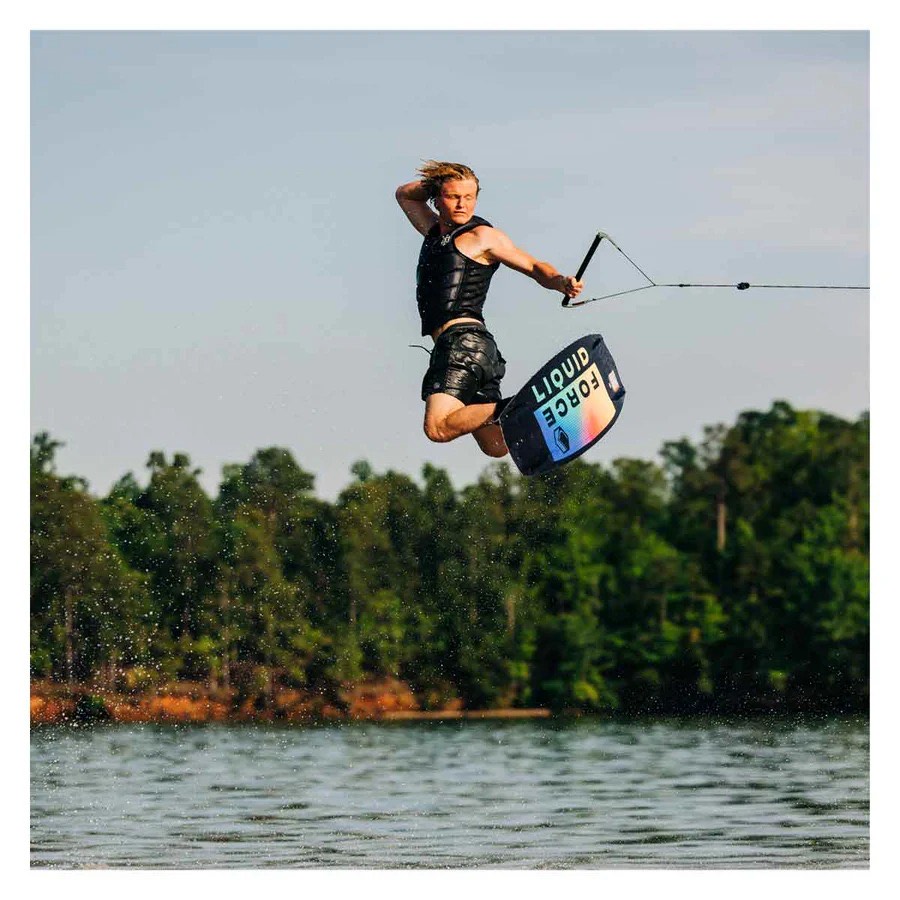
Wakeboarding is a thrilling sport that offers an incredible sense of freedom as you transition from the water to the air. This unique experience combines the excitement of surfing with the adrenaline of snowboarding, all while harnessing the power of the wake created by a boat. Unlocking your full potential in wakeboarding involves mastering both fundamental techniques and advanced maneuvers, allowing you to seamlessly move from gliding on water to soaring through the air.
Understanding the Fundamentals
Before you can truly unlock your potential, it’s essential to grasp the fundamentals of wake board. These foundational skills set the stage for advanced maneuvers and a smooth ride.
1. Perfect Your Stance
Your stance on the wake board is crucial for balance and control:
- Find Your Stance: Determine whether you are more comfortable riding in a regular stance (left foot forward) or goofy stance (right foot forward). Your dominant foot should be in front.
- Adjust Foot Position: Ensure your feet are positioned correctly in the bindings. Your feet should be shoulder-width apart, with your knees slightly bent to absorb impact and maintain stability.
2. Learn to Get Up
Getting up on the board is the first step to a successful ride:
- Starting Position: Begin by holding the handle close to your chest and keeping the board in a parallel position to the boat. As the boat starts moving, let your legs straighten and rise up.
- Maintain Balance: Once you’re up, focus on keeping your weight centered over the board. Lean slightly forward to keep the nose of the board up and avoid nose dives.
Mastering Water Control
Controlling your movements on the water is essential for a smooth and enjoyable ride. Focus on these key aspects:
1. Edge Control
Edge control involves shifting your weight between the heel-side and toe-side edges of the board:
- Heel-Side Edge: To ride on the heel-side edge, lean back slightly and apply pressure to your heels. This position helps you carve smoothly and maintain stability.
- Toe-Side Edge: For the toe-side edge, lean forward and press down on your toes. This position allows for sharp turns and smooth transitions between edges.
Practice transitioning between edges to improve your overall control and fluidity on the water.
2. Carving and Turning
Carving and turning are essential skills for maneuvering on the water:
- Initiate the Turn: To carve, apply pressure to the edge of the board in the direction you want to turn. Lean into the turn and maintain a consistent speed.
- Smooth Transitions: Gradually shift your weight to the opposite edge as you complete the turn. Smooth transitions between edges will result in a more fluid ride.
Progressing to Airborne Tricks
Once you’re comfortable with water control, you can start working on airborne tricks. These maneuvers take you from riding on water to soaring through the air:
1. Approaching the Wake
How you approach the wake is crucial for achieving a successful jump:
- Build Speed: Increase your speed as you approach the wake. A faster approach provides more lift and height for your jump.
- Edge Into the Wake: Maintain a steady edge as you approach the wake. This helps you build tension and prepare for the lift-off.
2. Launching Off the Wake
Launching off the wake requires precise timing and technique:
- Use Your Legs: As you reach the wake, use your legs to push off and generate lift. A strong, explosive pop will help you achieve greater height.
- Maintain Balance: Keep your body centered and your knees bent as you leave the wake. This position helps you maintain control and prepare for landing.
3. Executing Tricks
Once you’re airborne, you can start adding tricks to your routine:
- Basic Tricks: Start with basic tricks like grabs and spins. These foundational moves are essential for building confidence and skill.
- Advanced Tricks: As you progress, try more complex tricks like flips and inverts. These maneuvers require practice and precision, so focus on perfecting your technique.
- Add Style: Personalize your tricks with unique grabs and spins to add style to your performance. Experiment with different variations to develop your own signature moves.
Enhancing Your Performance
To unlock your full potential, consider these additional tips to enhance your wakeboarding performance:
1. Strengthen Your Core and Flexibility
Wakeboarding demands physical strength and flexibility:
- Core Exercises: Incorporate core-strengthening exercises like planks and Russian twists into your workout routine. A strong core improves balance and control.
- Flexibility Training: Stretch regularly to improve flexibility, especially in your legs, hips, and lower back. Greater flexibility enhances your range of motion and ability to execute tricks.
2. Invest in Quality Gear
High-quality gear can significantly impact your performance:
- Wakeboard: Choose a board that suits your skill level and riding style. Consider factors such as board length, rocker type, and fin setup.
- Bindings: Ensure your bindings are comfortable and provide a secure fit. Properly fitting bindings improve control and reduce the risk of injury.
- Life Vest: Wear a U.S. Coast Guard-approved life vest for safety and buoyancy. Choose a vest that fits well and allows for ease of movement.
3. Practice Regularly
Consistency is key to improving your wakeboarding skills:
- Set Goals: Define specific goals for your wakeboarding practice, such as mastering a new trick or improving your technique. Setting goals helps you stay focused and motivated.
- Track Progress: Keep track of your achievements and areas for improvement. Record your practice sessions and celebrate your successes.
- Stay Motivated: Maintain a positive mindset and stay motivated by challenging yourself and pushing your limits. Remember that progress takes time and dedication.
Embracing the Wakeboarding Community
Connecting with other wakeboarders can enhance your experience and provide valuable opportunities for growth:
1. Join Clubs and Events
Participate in local wakeboarding clubs and events to meet other enthusiasts and gain inspiration:
- Wakeboarding Clubs: Join clubs to connect with like-minded individuals, exchange tips, and share experiences.
- Competitions: Compete in local or national events to test your skills and gain exposure to different riding styles and techniques.
2. Follow Media and Online Communities
Stay updated with the latest trends and techniques by following wakeboarding media and online communities:
- Social Media: Follow wakeboarding accounts and influencers on social media to gain insights, inspiration, and updates on the sport.
- Forums and Groups: Participate in online forums and groups dedicated to wakeboarding. Engage in discussions, ask questions, and share your experiences.
Conclusion
Unlocking your wakeboarding potential involves mastering fundamental techniques, progressing to airborne tricks, and continuously improving your performance. By focusing on edge control, carving, launching off the wake, and executing tricks, you’ll seamlessly transition from water to air with style and confidence. Investing in quality gear, maintaining physical fitness, and staying connected with the wakeboarding community will further enhance your experience. Embrace the journey, push your limits, and enjoy the thrill of discovering your full potential in the world of wakeboarding.



